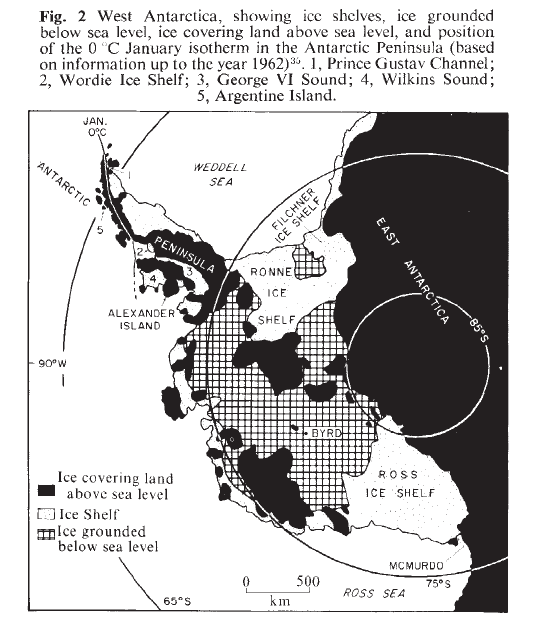
Some three decades ago, John Mercer, a glaciologist at Ohio State, wrote in the scientific journal, Nature:
"One warning sign that a dangerous warming is beginning in Antarctica, will be a breakup of ice shelves in the Antarctic Peninsula just south of the recent January 0C isotherm; the ice shelf in the Prince Gustav Channel on the east side of the peninsula, and the Wordie Ice Shelf; the ice shelf in George VI Sound, and the ice shelf in Wilkins Sound on the west side"
Mercer, Nature, vol. 271, p321, (1978)
The figure below from the referenced publication shows the location of the 0C isotherm in 1978. North of that line temperatures were above freezing and south of the line, below freezing.

Today, the ice shelves that he spoke of are all in retreat, or gone.
A slightly better illustration of these ice shelves from the US Geological Survey is reproduced below. The original is at
http://pubs.usgs.gov/fs/fs17-02/fig2.jpg
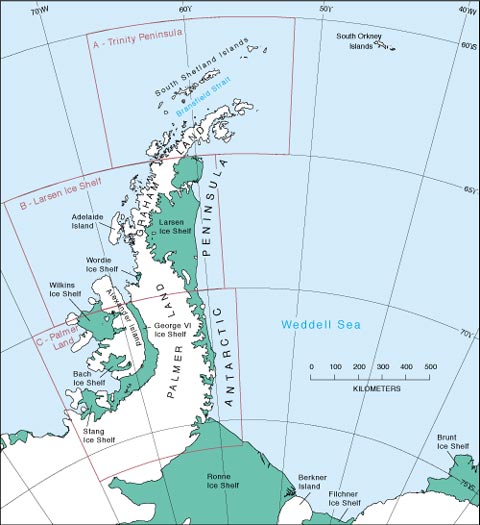
The disintegration of the Wordie Ice Shelf is also shown from the same page:
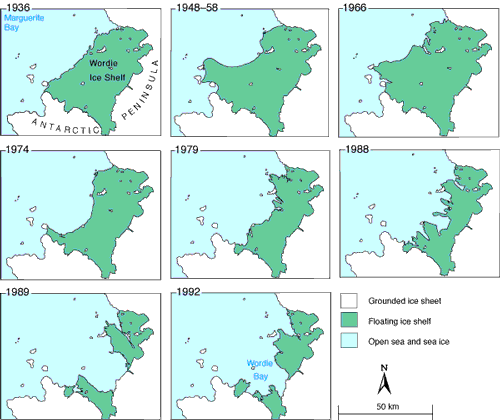
Here is the Wilkins Ice Shelf breaking up.

and from the ESA we have an animation of the breakup of the Wilkins Ice Shelf
Mercer was quite prescient as to the breakup of these ice shelves heralding a dangerous thaw. The reason for his anxiety is because a great part of the West Antarctic ice is grounded below sea level. We can see a picture of Antarctica bedrock from the BEDMAP data from wikipedia at http://en.wikipedia.org/wiki/File:AntarcticBedrock.jpg:
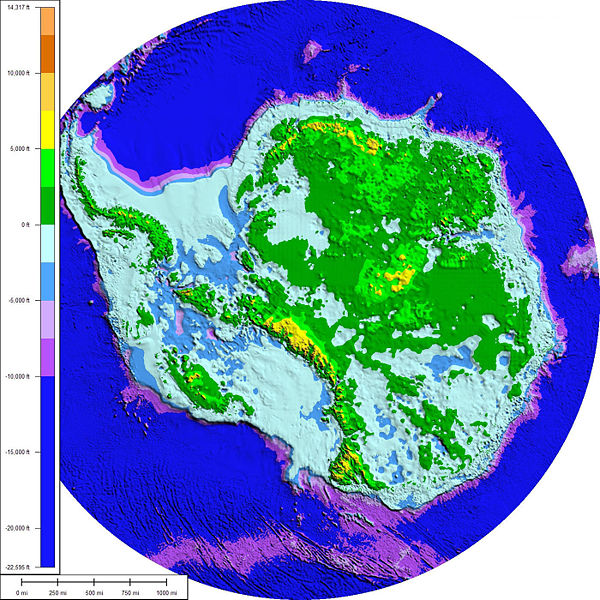
As the oceans warm, these ice masses are warmed as well and melt away. Levitus and others have measured the increase in ocean heat content, as may be seen in the figure below:
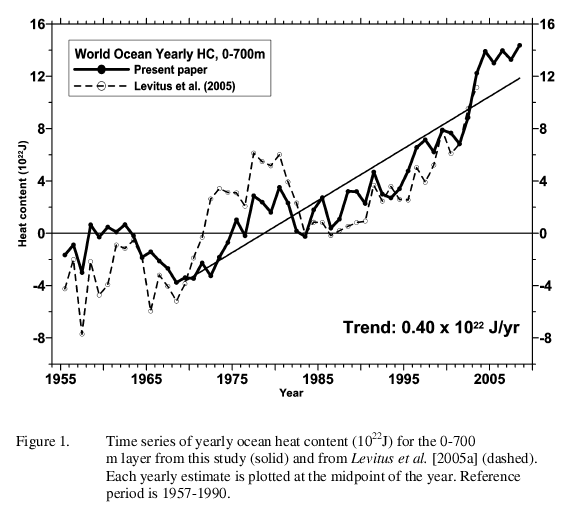
[An extended explanation of the instability of the ice sheet melting process may be found at My Long Thaw]
Indeed, we do find the signature of melting from the GRACE satellites, which measure the changes in gravitational attraction from melting ice. Chen et. al have published a paper measuring this effect, (http://www.nature.com/ngeo/journal/vaop/ncurrent/full/ngeo694.html) from which I reproduce figure 1 here:
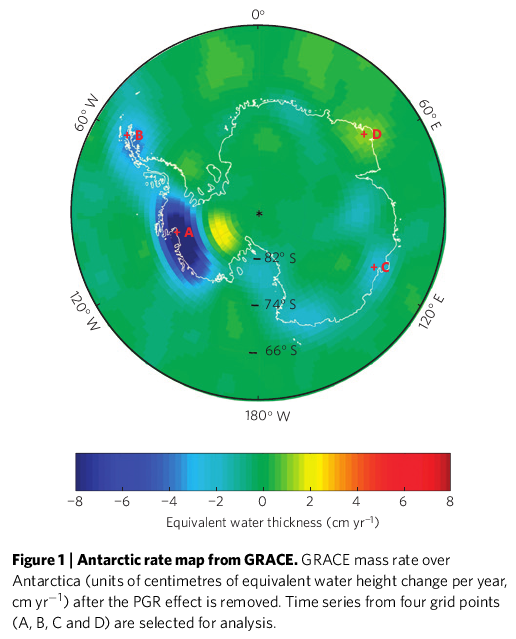
There is something quite disturbing about this last picture. Recollect, we found that the West Antarctic Ice sheet was expected to melt quickly as the ocean warmed. But this data indicates that the East Antarctic ice sheet is losing mass also.
Elsewhere, I have disussed Greenland and West Antarctica in more detail. Those two ice sheets contain enough to raise sea levels by 6 meters (18 feet) each. But East Antarctica, if melted, will raise sea level by 60 meters (180 ft.)!
I end this with a quote from the last link:
"And once we have destabilized these ice sheets, there will be no stable coastline for centuries.
I repeat: There will be no stable coastline for centuries
How bad ?
Hansen likes to point to a a great flood called Melt Water Pulse 1 A, some fourteen thousand years ago, when the ocean rose by a meter every twenty years. For five hundred years in a row.
Yes, it could get that bad."